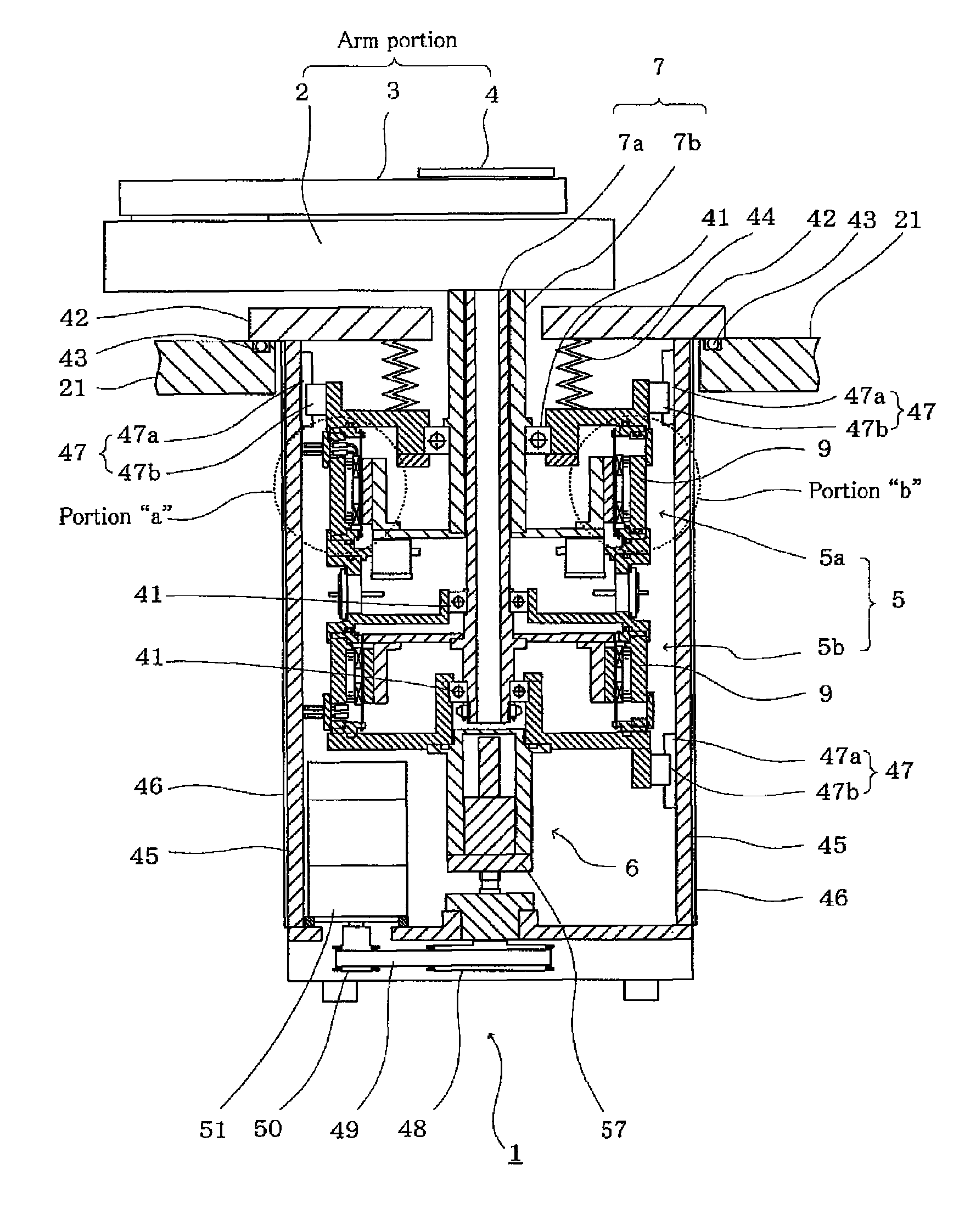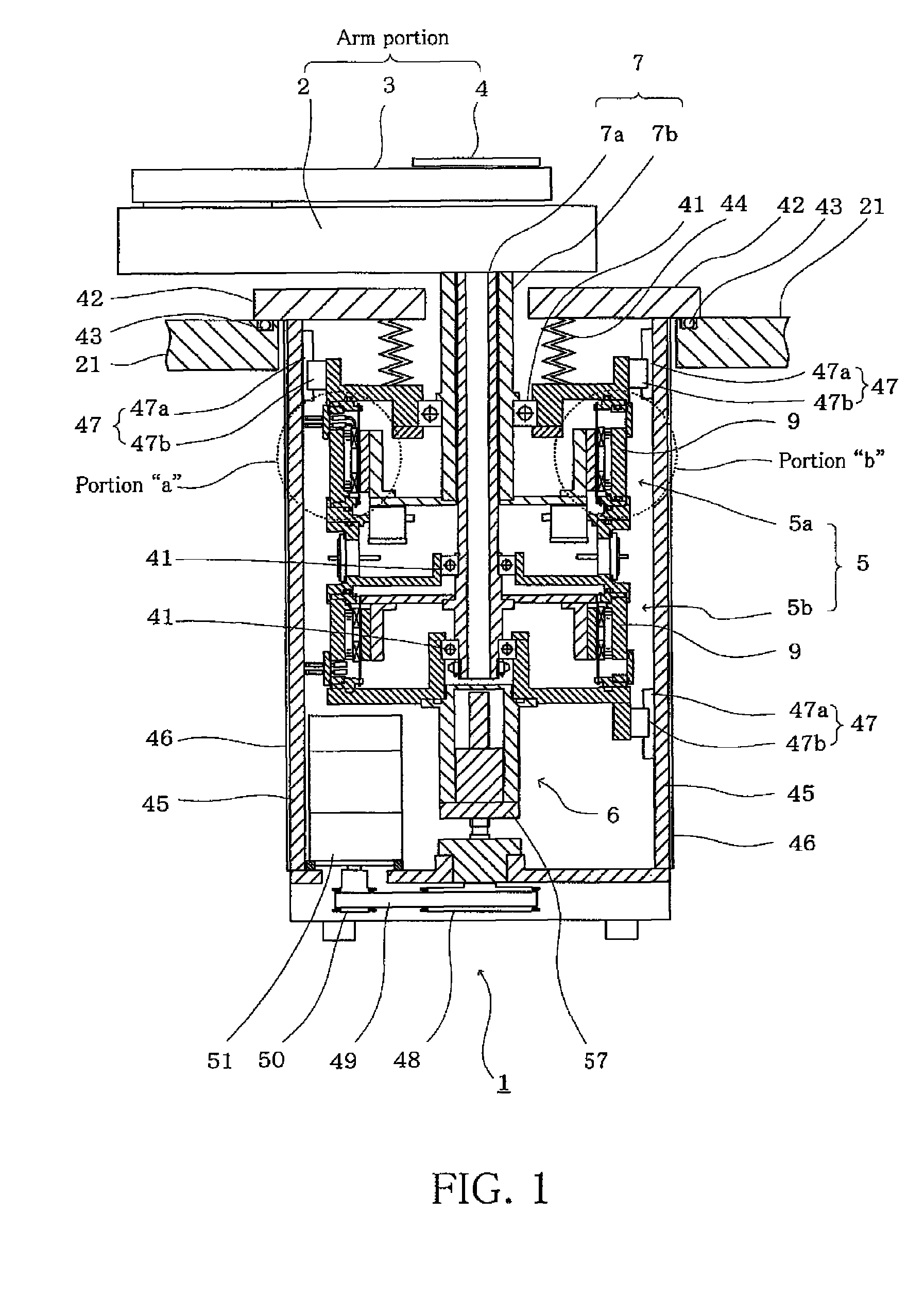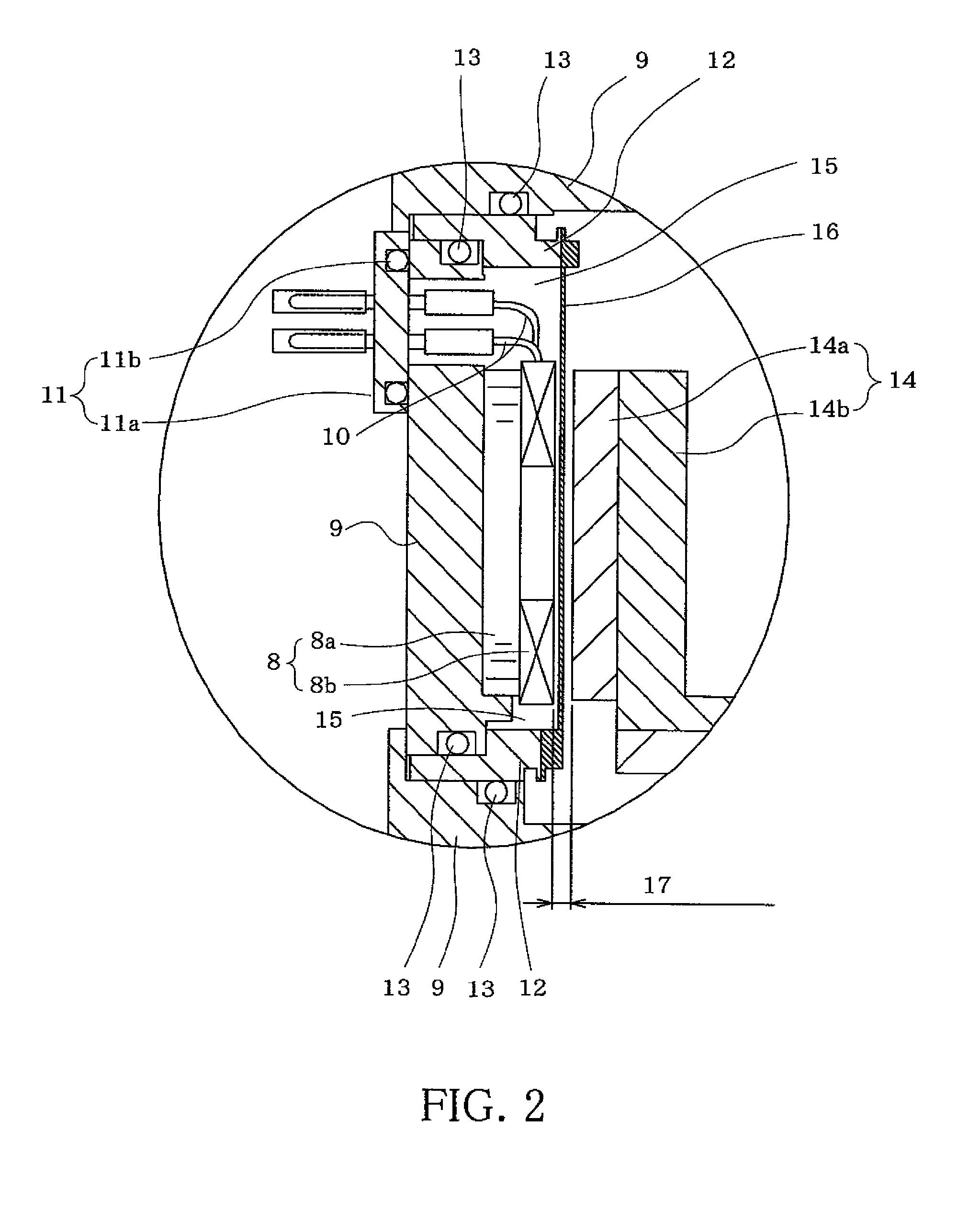Vacuum robot, vacuum motor for vacuum robot, and production method of said vacuum motor
a technology for vacuum robots and production methods, applied in manufacturing tools, packaging goods types, transportation and packaging, etc., can solve the problems of increasing the body size of the robot including the motor portion, extremely reducing electromagnetic power, and increasing the size of the robo
- Summary
- Abstract
- Description
- Claims
- Application Information
AI Technical Summary
Benefits of technology
Problems solved by technology
Method used
Image
Examples
Embodiment Construction
[0062]In the following paragraphs, some preferred embodiments of the invention will be described by way of example and not limitation. It should be understood based on this disclosure that various other modifications can be made by those in the art based on these illustrated embodiments.
[0063]An embodiment of the present invention will be explained with reference to the attached drawings. FIG. 1 is a side cross-sectional view of a vacuum robot showing an embodiment of the present invention. FIGS. 2 and 3 each shows an enlarged view of the principal portion (portion “a” and “b”) shown in FIG. 1.
[0064]In FIG. 1, the reference numeral “1” denotes a work transferring robot which is the same as the wafer transferring robot 1 shown in FIG. 5. The same reference numeral is allotted to the corresponding portion. The work transferring robot 1 generally includes an arm portion including robot arms 2 and 3 and a hand 4, and a motor portion 5 for rotatably driving the arm portion. The motor por...
PUM
 Login to View More
Login to View More Abstract
Description
Claims
Application Information
 Login to View More
Login to View More - R&D
- Intellectual Property
- Life Sciences
- Materials
- Tech Scout
- Unparalleled Data Quality
- Higher Quality Content
- 60% Fewer Hallucinations
Browse by: Latest US Patents, China's latest patents, Technical Efficacy Thesaurus, Application Domain, Technology Topic, Popular Technical Reports.
© 2025 PatSnap. All rights reserved.Legal|Privacy policy|Modern Slavery Act Transparency Statement|Sitemap|About US| Contact US: help@patsnap.com



